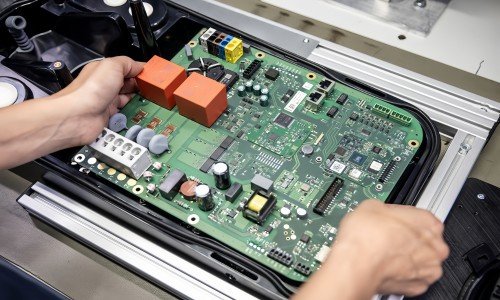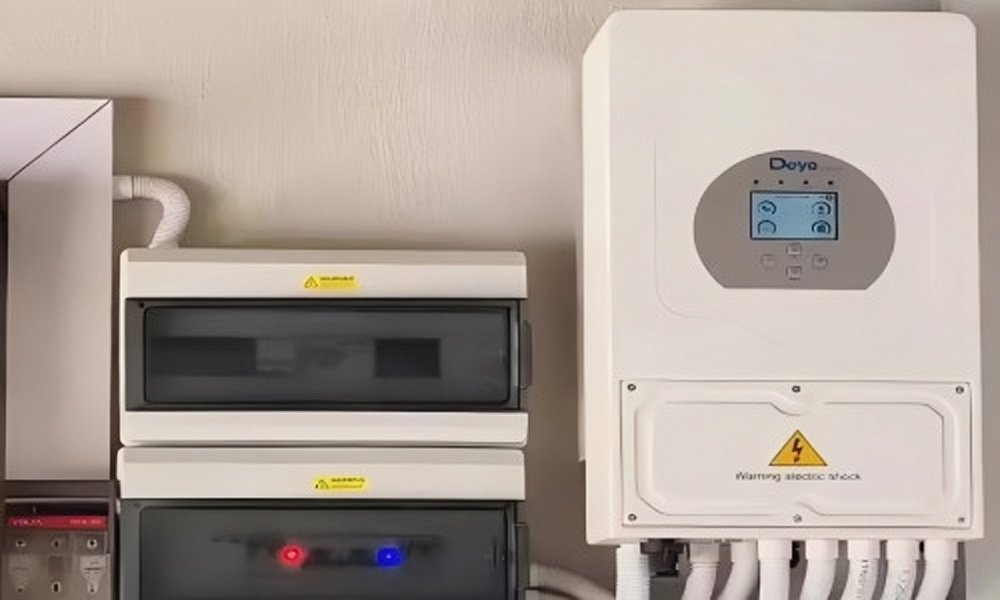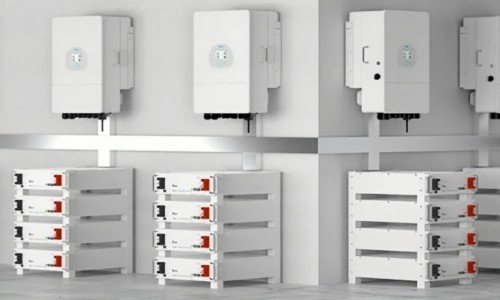
Commercial solar system
When choosing an inverter for your solar system, Deye and SMA are two leading brands that come highly recommended for their performance, reliability, and advanced technology. Both offer a range of products suited to residential and commercial applications, but selecting the right one can depend on your specific needs and preferences. In this article, we will compare Deye and SMA inverters across key factors such as efficiency, reliability, value for money, and essential features to help you make an informed decision.
Both Deye and SMA inverters are top performers, but which one is the better fit for your solar system? Let’s compare their strengths and weaknesses.
What Are the Key Differences in Efficiency Between Deye and SMA Inverters?
Efficiency is a critical factor in the performance of your solar energy system, as it determines how effectively the inverter converts solar power into usable electricity. Higher efficiency means more of the generated solar power is harnessed, leading to better energy production and lower electricity costs.
Let’s compare the efficiency of Deye1 and SMA2 inverters to determine which provides better energy conversion.

Deye and SMA inverters
Deye vs SMA: Efficiency Comparison
| Inverter Model | Deye SUN-3.6/5/6K-SG03LP1-EU | SMA Sunny Boy 5.0 |
|---|---|---|
| Efficiency | 98.4% | 98.2% |
| Max Output Power | 6kW | 5kW |
| MPPT (Maximum Power Point Tracking) | Dual MPPT | Dual MPPT |
| Operating Temperature Range | -25°C to +60°C | -25°C to +60°C |
| Maximum Input Voltage | 600V | 600V |
-
Efficiency:
- Deye: Deye inverters offer a higher efficiency of 98.4%, which allows them to convert a higher percentage of the energy captured by your solar panels into usable electricity. This can lead to more energy savings in the long term.
- SMA: SMA inverters have a slightly lower efficiency of 98.2%, which is still excellent but marginally less efficient than Deye.
-
MPPT:
- Both Deye and SMA inverters feature dual MPPT, ensuring that each solar panel string operates at its optimal voltage to maximize energy production, even when the panels experience partial shading or are oriented differently.
Conclusion: Deye offers slightly better efficiency, which can result in higher long-term energy savings. However, SMA’s efficiency is still excellent and suitable for most residential and commercial applications.
How Do Deye and SMA Compare in Terms of Reliability and Durability?
Reliability and durability are key factors in selecting an inverter, as you want to ensure that your system operates smoothly for many years. Inverters need to withstand harsh weather conditions, including heat, humidity, and dust, while maintaining performance over time.
Let’s compare the reliability and durability of two leading brands to see which offers the most robust solution in terms of IP65 protection3 and cooling systems4.

Solar inverter circuit board
Deye vs SMA: Reliability and Durability Comparison
| Inverter Model | Deye SUN-3.6/5/6K-SG03LP1-EU | SMA Sunny Boy 5.0 |
|---|---|---|
| IP Rating | IP65 | IP65 |
| Warranty | 5–10 years | 10 years |
| Operating Temperature Range | -25°C to +60°C | -25°C to +60°C |
| Cooling System | Advanced cooling system | Integrated cooling |
-
Build Quality:
- Deye: Deye inverters are built to be durable, with a robust design that ensures they perform well under various environmental conditions. Their IP65 rating indicates that they are protected against dust and water ingress, making them suitable for outdoor use in harsh climates.
- SMA: SMA inverters are also highly reliable and come with an IP65 rating, which means they are equally protected against dust and moisture. SMA inverters are known for their long-lasting durability, especially in residential solar installations.
-
Warranty:
- Deye: Deye inverters come with a warranty period of 5 to 10 years, depending on the model and region, which is a solid offering in the market.
- SMA: SMA offers a longer warranty period of 10 years, which gives users added peace of mind and reflects the brand’s confidence in the durability of its products.
-
Cooling:
- Both Deye and SMA feature integrated cooling systems to prevent overheating during prolonged high-power output. However, Deye inverters come with an advanced cooling system that may offer better performance in extremely hot climates.
Conclusion: Both Deye and SMA are reliable brands with durable inverters. SMA offers a longer warranty, which may provide greater peace of mind, but Deye’s advanced cooling system gives it an edge in extremely hot environments.
Which Offers Better Value for Money: Deye or SMA Inverters?
Cost-effectiveness is a major factor in deciding which inverter to purchase. While the initial cost is important, the long-term value, considering energy savings and durability, should also be considered.
Let’s compare the value for money offered by inverters, factoring in solar inverter payback periods5 and cost comparison6.

Deye inverter installation
Deye vs SMA: Value for Money Comparison
| Inverter Model | Deye SUN-3.6/5/6K-SG03LP1-EU | SMA Sunny Boy 5.0 |
|---|---|---|
| Initial Price | $1,200 – $1,500 | $1,500 – $1,800 |
| Efficiency | 98.4% | 98.2% |
| Payback Period | 5–6 years | 5–6 years |
| Annual Energy Savings | 4,000 – 6,000 kWh | 3,800 – 5,500 kWh |
-
Initial Price:
- Deye: Deye inverters typically cost between $1,200 and $1,500, which is more affordable than SMA’s models. For homeowners or small businesses on a budget, Deye offers a more cost-effective solution while still delivering high efficiency.
- SMA: SMA inverters are priced slightly higher, ranging from $1,500 to $1,800. While they are a bit more expensive, they offer a longer warranty and proven reliability.
-
Payback Period:
- Deye: With a payback period of 5 to 6 years, Deye offers good long-term value, thanks to its higher efficiency and lower initial cost.
- SMA: SMA inverters have a similar payback period, typically 5 to 6 years. However, the higher initial cost may make it a less attractive option for those prioritizing upfront savings.
Conclusion: Deye offers better value for money with a lower initial price and competitive efficiency. SMA provides excellent value in terms of reliability and warranty, but the higher cost may not justify the slightly better performance for some users.
What Features Should You Prioritize When Selecting Between Deye and SMA?
When deciding between Deye and SMA inverters, there are several key features to consider based on your specific needs, including efficiency, reliability, warranty, and system integration.
Let’s explore the most important features to prioritize when selecting an inverter for your solar system.

Solar energy system setup
Key Features of Deye and SMA
| Feature | Deye SUN-3.6/5/6K-SG03LP1-EU | SMA Sunny Boy 5.0 |
|---|---|---|
| Efficiency | 98.4% | 98.2% |
| MPPT | Dual MPPT | Dual MPPT |
| Cooling System | Advanced cooling | Integrated cooling |
| Warranty | 5–10 years | 10 years |
| Monitoring | Real-time monitoring via app/web portal | Smart monitoring via mobile app |
-
Efficiency:
- Deye: Prioritize Deye if higher efficiency is crucial for your system. With 98.4% efficiency, Deye will maximize energy conversion and offer greater long-term savings.
- SMA: SMA also offers excellent efficiency, and if reliability and longer warranties are more important to you, SMA could be the better choice.
-
Cooling and Durability:
- Deye: Choose Deye if you are installing in a location with extreme temperatures, as their advanced cooling system can help maintain optimal performance.
- SMA: SMA offers a more standard cooling system, which works well in moderate climates.
-
Warranty:
- Deye: Deye provides a warranty of 5 to 10 years, which is sufficient for most residential and small commercial setups.
- SMA: SMA offers a 10-year warranty, which may provide greater peace of mind for those prioritizing long-term durability and reliability.
Conclusion: Prioritize Deye if you value efficiency, cost-effectiveness, and advanced cooling. If reliability, warranty, and long-term service are more important, SMA may be the better choice for you.
Conclusion
Choosing between Deye and SMA inverters depends on your specific priorities. Deye offers better efficiency and a more affordable price, making it ideal for those looking for high performance without a large upfront investment. SMA, on the other hand, provides excellent reliability, a longer warranty, and solid performance, making it a good choice for those who prioritize long-term durability and peace of mind.
Consider factors such as efficiency, cost, warranty, and the environmental conditions of your location when making your decision.
-
Understand the key differences in energy conversion efficiency between Deye and SMA inverters. ↩
-
Learn how dual MPPT technology optimizes solar energy production under varying conditions. ↩
-
Understand how the IP65 rating ensures dust and water resistance for inverters in outdoor settings. ↩
-
Explore how cooling systems prevent overheating and extend the lifespan of solar inverters. ↩
-
Understand how long it takes to recover your investment in a solar inverter through energy savings. ↩
-
Learn how the prices of different solar inverters, including Deye and SMA, compare in the market. ↩



